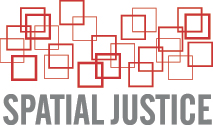CURRENT SPATIAL JUSTICE PROJECTS
Spatial Analysis of Community-Oriented Development
Spatial Justice consultant Jonathan Glick has recently prepared maps and analysis for community groups seeking to guide neighborhood development in Seattle.
We are currently working on a collaborative project in Seattle aimed at helping existing low income residents to secure the benefits of transit oriented development (TOD). A preliminary presentation of the project is now available.
Earlier, we prepared a map and summary statistics identifying historic properties and properties with high development potential in a Seattle neighborhood (see image at right). This map is currently being used to advocate for the preservation of historic properties while still allowing for the additional development of affordable housing.
In a related project we conducted a Hot Spot Analysis* of development level in potential transit corridors. This technique found clusters of properties with high potential for new community-oriented development and related these to a proposed transit project.
*See our Toolbox page Analyzing Distribution Across Territories for more information on this technique.
Visualization of Neighborhood Diversity
The Neighborhood Diversity Project is a web-based mapping project for exploring neighborhood diversity and transportation options. Users can view Diversity Scores based on household income, family type, and ethnicity. The preliminary beta example prepared by Jonathan Glick uses Census 2000 tract data for the Seattle-Tacoma, Washington-Baltimore and Chicago areas.
Other related projects include dot density maps of poverty levels and a series of maps of racial/ethnic segregation for some of the largest US metropolitan areas, all based on Census 2000 data. These maps depict several large metro areas at the same geographic scale, allowing for comparison of spatial patterns of population density and segregation.
SCOPE OF OUR PROJECTS
The guidance, techniques and data / software made available through Spatial Justice Resources can be used to support a wide variety of projects in which a community group or non-profit has the need to demonstrate that spatial inequality or injustice exists in a particular situation.
We expect there will be considerable commonality across cities, regions and countries in terms of the types of spatial injustice issues present as well as the basic approach to describing, measuring and analyzing the relevant data to help make the case for the existence (and severity) of the inequality. When it comes to availability of data, local conditions may be very different, since governmental sources as well as commercial and open-source data providers, vary greatly in terms of the kinds of data made available and the level of detail and precision, data attributes, and other characteristics of the data which will, in turn, have a significant effect on a project’s feasibility, complexity and cost.
